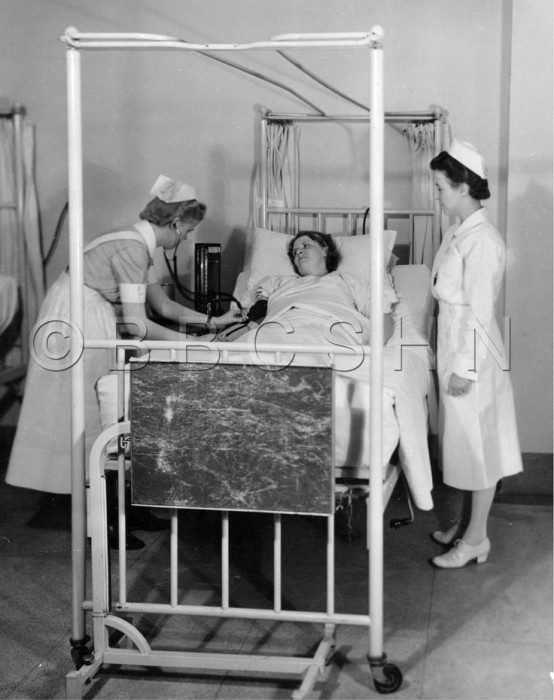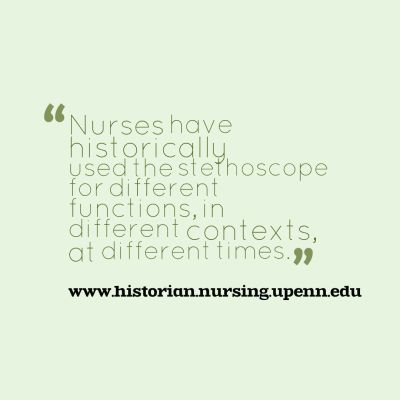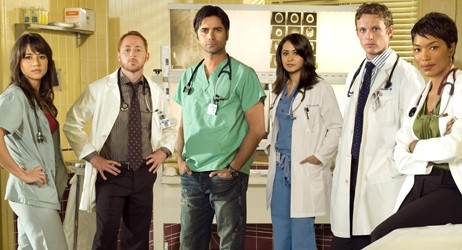By Lydia Wytenbroek, York University
Last September, the Miss America competition’s talent portion featured Kelley Johnson, Miss Colorado, a registered nurse, who appeared on stage wearing nurses’ scrubs with a stethoscope around her neck. Johnson’s talent was delivery of a monologue about her experience caring for Joe, a patient with Alzheimer ’s disease. In a competition where the majority of contestants choose to enact a song or dance, Johnson’s performance stood out as unique. But it was comments made about Johnson’s monologue the following day by the co-hosts of ABC’s The View which hurled Johnson, and the nursing profession, into the public spotlight. In the course of recapping pageant events, the co-hosts mocked Johnson’s performance. Joy Behar’s astonishingly remarked, “Why does she have a doctor’s stethoscope around her neck?,” outraged nurses from across the country, who flocked to social media posting pictures of themselves with their stethoscopes under the twitter hashtags #NursesUnite, #NursesShareYourStethoscopes and #ThisIsNotaCostume. In response to the statements made on The View, Pamela Cipriano, President of the American Nurses Association, issued a public statement emphasizing that nurses “don’t wear costumes; they save lives.”[1]
Behar’s comment is striking because it demonstrated an appalling lack of understanding about the value of nurses’ work. Nurses use stethoscopes on a daily basis in multiple ways that, in conjunction with nursing knowledge and skill, matter to patient care and patient outcomes. On the post-operative ward where I work, nurses are required to use a stethoscope in their assessment of a patient’s abdomen and chest, interpreting whether the sounds they hear on auscultation are normal or abnormal with follow-up for abnormal findings. In theory and practice however, the nursing-technology relationship has largely been understood within the confines of traditional concepts of gender and hierarchy which have helped to foster the notion that stethoscopes are a “physician’s tool.”[2]
Nurses have historically used the stethoscope for different functions, in different contexts, at different times. In the 1930s, nurses began to routinely use the stethoscope to measure blood pressure.

A student nurse at a bedside taking a patient’s blood pressure while Instructor Sarah P. White looks on, Hospital of the University of Pennsylvania, 1942. Image courtesy of the Barbara Bates Center for the Study of the History of Nursing.
By the 1960s, images of nurses with stethoscopes began to appear in the American Journal of Nursing (AJN) and The Canadian Nurse, usually in the context of taking blood pressure or with a sphygmomanometer.

Beginning in the 1960s, nursing journals carried the first stethoscope advertisements with the technology initially being marketed to nurses as the “assistoscope” and the “nursescope.”[3] Naming the nurse’s stethoscope the “assistoscope” implied a gendered construction of how nurses engaged with science and technology.

Ads from The Canadian Nurse, September 1962 and February 1972.
Advertisements attempted to persuade nurses that they could own their “very own stethoscope,” one that was “designed with the nurse in mind,”[4] although most nurses did not purchase their own stethoscopes for use within the hospital setting until the 1980s and 1990s.

Nurses’ expanded utilization of the stethoscope reveals their changing scope of practice. In the 1970s, nurses began to use the stethoscope to perform abdominal and chest assessments. David Littmann, the eponymous inventor of the Littmann Stethoscope, wrote in a 1972 AJN article that “various types of auscultation” were now “a normal and expected part of modern nursing care” making the stethoscope “as much a part of the nurse’s armamentarium as the doctor’s.”[5] Jean Willacker’s 1973 article about the nurse’s role in assessing bowel sounds, suggested that “nurses … can tune into patients’ gastrointestinal problems if they are skilled in listening to bowel sounds and know how to interpret them.”[6] It was the nurse’s “skill in assessing abdominal problems” that enabled the rapid treatment and prevention of life-threatening outcomes for the patient in her case study.

David Littmann, “Stethoscopes and Auscultation,” American Journal of Nursing 72, no. 7 (July 1972): 1238.
The expanded role of the nurse in physical assessments transformed nursing practice in key ways. As Willacker noted, auscultation required skill and interpretation on the part of the nurse and this nursing knowledge was vital to a patient’s prognosis and recovery. Nurses’ acquisition of physical assessment skills also meant that nurses and physicians re-negotiated professional boundaries as they shared responsibility for the physical monitoring of the patient. In critical care settings, such as ICUs, professional boundaries and skill delineation were initial issues negotiated between nurses and physicians.
In addition to its function as a medical instrument used by healthcare practitioners for physical assessment, the stethoscope has become a powerful symbol of status and scientific expertise. Media representations of physicians especially, but also nurses, in shows like ER, Grey’s Anatomy, and HawthoRNe, often depict healthcare providers with stethoscopes tucked in their pockets or hanging around their necks as a symbol of professional identity.

Cast of ER, season 15
The social and gendered construction of nursing as a caring profession and medicine as a curing profession has historically privileged the work of medicine over the work of nursing and contributed to the invisibility of nurses, as well as their command and use of technology. Historian Julie Fairman suggests that it is the nurse who “makes technology systems possible” and who often has “more power over technology system decisions than is usually acknowledged in the current historiographic literature.”[7] The comments made on The View reveal that nurses still have work to do in educating the public about their critical role in the healthcare technological system. Nurses today use their stethoscopes for a myriad of procedures and assessments. They garner data about a patient’s physiological status, interpret this data, and use it to provide excellent, competent care, and do all of this while keeping the patient at the center of their professional work. As we celebrate Nurses Week let’s keep in mind the genuine contributions nurses make to health care delivery and the ways in which they do so.
Notes
[1] “Statement: ANA President Cipriano Responds to Comments on ABC’s ‘The View,'” last modified September 9, 2015, http://nursingworld.org/HomepageCategory/NursingInsider/Archive-1/2015-NI/Sept15-NI/Statement-ANA-President-Responds-ABCs-The-View.html
[2] Julie Fairman and Patricia D’Antonio, “Virtual power: gendering the nurse–technology relationship.” Nursing Inquiry 6, no. 3 (1999): 178-186.
[3] Christopher Crenner, “Professional Measurement: Quantifying Health and Disease in American Medical Practice, 1880-1920,” (PhD diss, Harvard University, 1993), 50-51. See also Margarete Sandelowski’s discussion on stethoscope advertisements for nurses in footnote 66. Margarete Sandelowski, Devices & Desires: Gender, Technology and American Nursing (Chapel Hill, NC: The University of North Carolina, 2000), 231.
[4] Winley-Morris Company Ltd., “Assistoscope,” The Canadian Nurse 62, no. 11 (November, 1966): 13.
[5] David Littmann, “Stethoscopes and Auscultation,” American Journal of Nursing 72, no. 7 (July 1972): 1239.
[6] Jean Willacker, “Bowel Sounds,” American Journal of Nursing, 73, no. 12 (Dec., 1973): 2100.
[7] Julie Fairman, “Alternative Visions: The Nurse-Technology Relationship in the Context of the History of Technology,” Nursing History Review 6 (1998): 137.
Lydia Wytenbroek is a PhD Candidate in the Graduate Program in History at York University in Toronto, Canada. Her dissertation explores American-run medical mission institutions in Iran in the twentieth century. She is currently president of the Canadian Association for the History of Nursing/Association canadienne pour l’histoire du nursing.

Great Article.
LikeLike
Pingback: Graduate Associate Publication | The Stethoscope: A Tool of Nurses’ Trade since the 1930s | York Centre for Asian Research
Pingback: Graduate Associate Publication | The Stethoscope: A Tool of Nurses’ Trade since the 1930s – York Centre for Asian Research
Well said, I am also an graduate nurse, I totally agreed… The immature thoughts and stupid ideologist comments has to be cleared in such a way………..
LikeLike